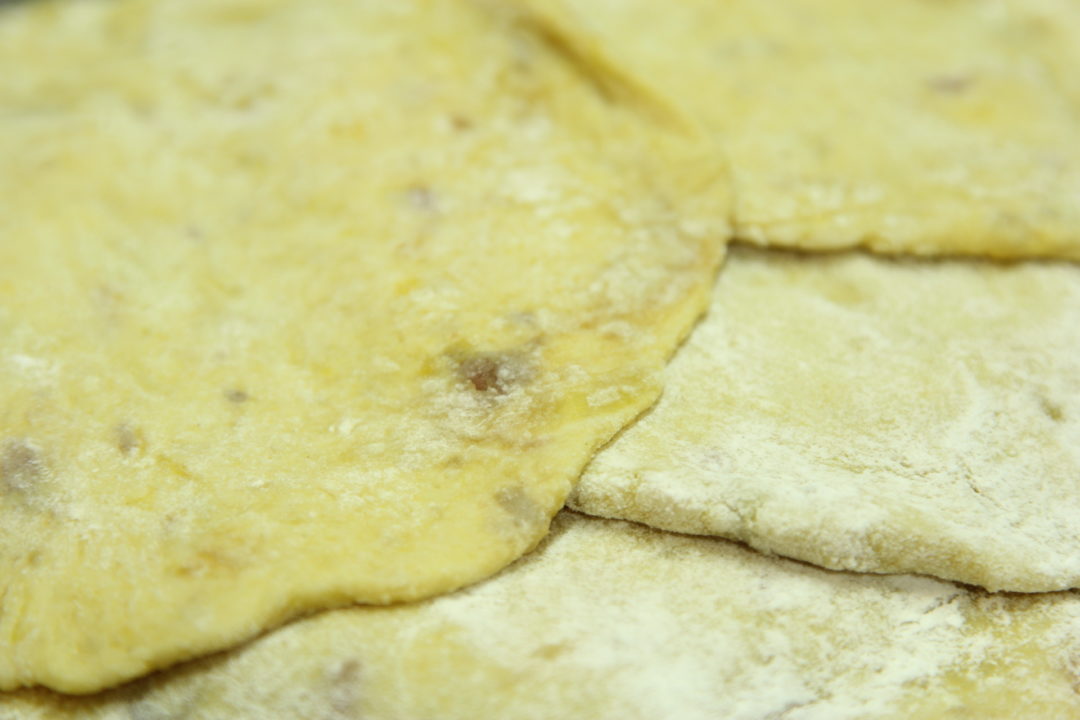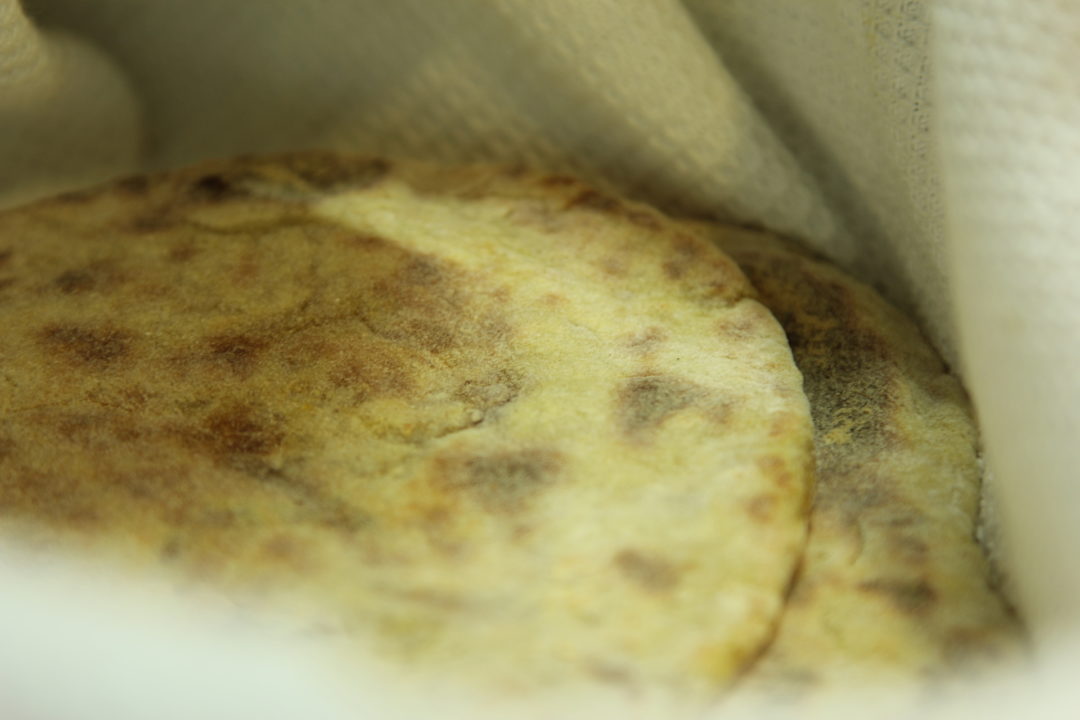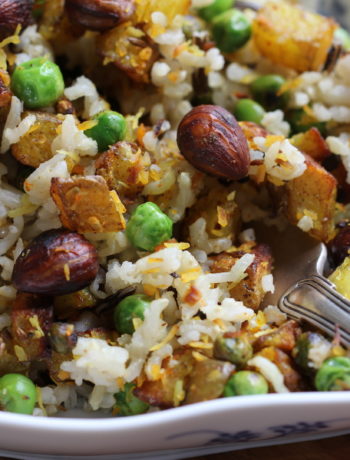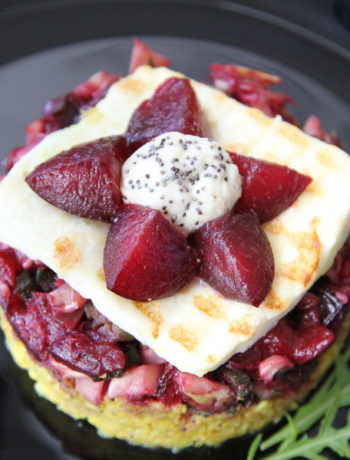
 Add to Favorites
Add to FavoritesAn easy, delicious, and simple recipe, this Sweet Potato Roti is a healthier, gluten-free version of the famous flatbread. It only has two ingredients with no added oil or yeast.
Roti or Flatbread origin is very ancient, where wheat was first produced and spread as bread was prepared. As described and illustrated by researchers’ findings from Indus civilization, Mesopotamia, ancient Egypt, was plausibly the first processed foods. The Roti is an unleavened, round flatbread traditionally made with flour and water.
Roti has metamorphosed from an everyday household staple to global cuisine, served as a side dish or accompaniment for various dishes, popularly eaten with a meal of curries or dal in India. With hummus in the middles east, feijoada in the South Americas relishes in African. The list goes on in every continent and everywhere as wraps with either savory or sweet fillings.
The secret to making perfect soft roti that puffs up beautifully when cooked ensures that the ratio between the flour and water is correct. Adding too much flour will result in a hard roti. Since this recipe involves adding mashed sweet potato, the heat from the sweet potato also helps make the roti soft.
It is important not to overwork the dough as it may result in a messy, sticky dough that will require more flour once the roti puffs up and is thoroughly cooked, set the flatbread aside and keep it covered with a tea towel. This locks in the heat and moisture from the dough, keeping it soft and preventing it from drying out and becoming hard and rubbery.
You can serve the Roti with dal, sweet peas mix, bean curry, or just with your favorite pesto, and you may like to follow the recipe below to learn how to make these lovely mild sweet soft fluffy vegan roti.
Sweet potato Roti (Flatbread)
The recipe is divided into 4 segments: cooking sweet potatoes, making the mash, making the dough, cooking and storing the roti. Nutrition Benefits: Sweet Potatoes are highly nutritious. They are a good source of carbohydrates yet are considered low glycemic, making them beneficial for those who are regulating their sugar levels. They also are rich in vitamin A and C, which are important in keeping a healthy immune system and helps in fighting bacteria and viruses.
Ingredients
- 2 medium-sized sweet potatoes, cut in half
- 1 cup buckwheat flour or all-purpose flour for non-glutenfree
- 1 tsp basil or coriander leaves, finely chopped (optional)
- Salt to taste
Instructions
Prepare the sweet potatoes:
Add 2-3 cups of water to a pot. Place the sweet potatoes with skin into the water, ensuring that at least 90% is covered with water. Place the pot on a stovetop at high heat and bring to a boil. Alternatively, you can also place sweet potatoes in a steamer.
Sweet potatoes cook rather quickly. Let the sweet potatoes cook for at least 30 minutes, or until it is very soft. You can check this by piercing the sweet potato with a fork. Once thoroughly cooked, remove the potatoes from the pan.
Peel the sweet potatoes by using a fork to pierce the potato and hold to remove the skin. Again, it would help if you worked quickly.
The potatoes need to be hot for this recipe, so you may use a clean kitchen towel to make handling the hot sweet potatoes easier.
Mash the sweet potatoes until there are no more clumps found.
Add one cup of buckwheat flour (gluten-free) to a mixing bowl. If you aren't going gluten-free, you may use all-purpose flour.
Add the mashed sweet potato. Start by mixing with a fork as the sweet potato will be too hot to handle.
Now is a good moment to add chopped basil if you like as it cools. Work the mixture with your hand until a dough is formed.
Do not overwork it as it may start to get sticky, which will require adding more flour, resulting in a hard roti.
Make the roti:
Once the dough is formed, dust some flour onto the work surface to begin work on the dough. Use a rolling pin to roll it into a thick log. Then cut the log into 6 to 8 equal portions.
Keep a bowl of flour close by to dust your hands with a little flour and take one portion of the dough. Roll it between your palms into a ball, then lightly flatten it into a disc.
Then dip the disc into the bowl of flour, covering it on both sides.
Now lightly flatten the edge of the disc with your thumb and first finger. This will help keep its round shape when we roll it out.
Set it aside or place it back into the mixing bowl. Do the same for the rest of the pieces.
Take one disc and place it on the work surface, and begin to roll it out. Turn the rolled dough to the other side and continue to roll out by applying even pressure so that the roti can rotate on itself to create a nice round shape. Dust with more flour as needed, but be careful not to add too much as this may result in a hard flatbread.
Roll the dough out until the roti is about 2 mm thick.
Cook the roti:
Heat a Tawa, skillet, or crepe pan on medium heat. When the pan is hot, place the roti on it and allow it to cook for 20 to 30 seconds. Then flip the roti at 30-second intervals. When the roti starts to bubble, leave it to cook for a little longer than 30 seconds before flipping. The bubbles mean that the hot air is cooking it from the inside to cook the roti for a total of two to two and a half minutes.
Once cooked, place the roti in a container or a plate lined with a clean tea towel to keep this plate covered.
Adjust the temperature of the skillet as needed when it gets too hot. Brush off any loose flour on the pan before adding the next roti. Now repeat for the rest of the roti.
Always keep the rotis covered with the tea towel to remain soft. This will also prevent them from getting soggy with the steam from the container.
Occasionally, flip the roti in the container so that the last one is not sandwiched between the other flatbreads. This helps to soften them further.
Nutrition
-
126 Calories
-
28.1g Carbohydrates
-
0.7g Fat
-
4.1g Fiber
-
3.3g Protein
-
0.2g Saturated fat
-
34mg Sodium
-
0.8g Sugar
Notes
You can serve the Roti with dal, sweet peas mix, curry, or just with your favorite pesto.





























2 Comments
Bismi Caterers Perambur
May 11, 2024 at 11:26 amThis Sweet Potato Roti recipe is a true gem! I love how it offers a healthier and gluten-free twist to the classic flatbread, making it accessible to a wider range of dietary preferences. The historical context provided adds a fascinating layer to the culinary journey of roti, showcasing its evolution from a simple household staple to a beloved global cuisine. The tip about achieving the perfect soft texture by maintaining the right flour-to-water ratio is invaluable for anyone attempting this recipe. I can’t wait to give it a try and explore all the delicious serving options mentioned. Thanks for sharing this wonderful recipe!
gonzalo7373
June 20, 2024 at 1:36 am🙂